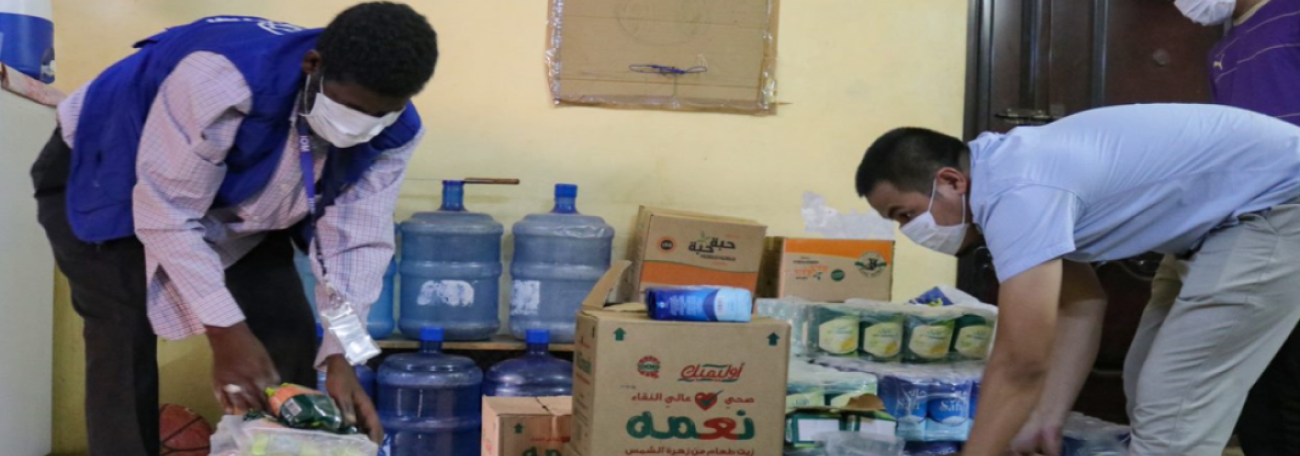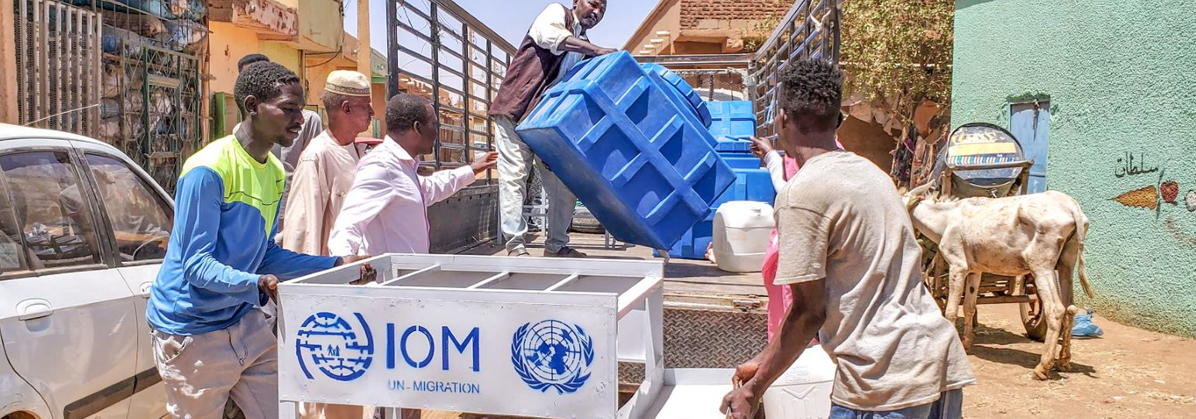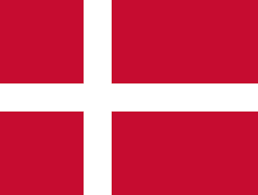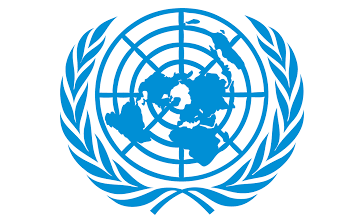IOM Vision
IOM Sudan plans to adopt an integrated approach to Sudan’s migration and crisis response challenges and support the Government of Sudan in both demonstrating the principles and achieving the objectives of good migration governance including managing mobility dimensions of crises.
Objective
Saving lives and protecting people on the move
IOM foresees humanitarian support will be needed for the following population groups:
- Newly displaced IDPs, refugees and populations affected by man-made or natural disasters.
- IDPs, refugees, and returnees in protracted displacement that continue to suffer from poor living conditions and lack of support and are facing challenging conditions such as limited access to basic services and livelihood opportunities.
- Vulnerable host communities in areas of displacement and return where services are overstretched.
- Internal and international migrants in need of direct assistance or movement assistance.
|
People Targeted: Indirect beneficiaries 350,000 vulnerable people in camp and camp-like settings. Entities Targeted: 75 UN agencies and INGOs/NGO to coordinate assistance, services and protection activities in camps and camp-like settings. IOM will ensure a harmonised national approach to support and assist IDPs through IOM Sudan’s role as co-lead on the COVID-19 IDP Camp Coordination Taskforce in coordination with UNHCR. Activities will include:
|
|
People Targeted: 150,000 IDPs, refugees, returnees, and other vulnerable crisis-affected communities. Entities Targeted: Ministry of Health
|
|
People Targeted: 450,000 IDPs, refugees, and returnees and other vulnerable crisis-affected communities. Entities Targeted: Ministry of Irrigation and Water, Water and Environmental Sanitation (WES).
|
|
People Targeted: 350,000 IDPs, refugees, returnees, and other vulnerable crisis-affected local communities. Entities Targeted: Humanitarian Aid Commission (HAC) and National NGOs. Shelter and non-food items (NFI) interventions will be used to improve living conditions for vulnerable populations, targeting camps and communities with high rates of displacement or contributing to the safe return or relocation of vulnerable groups. Activities will include:
|
People Targeted: 5,000 internal and international migrants.
IOM will
• Provide direct assistance through the Migrant Resource and Response Centre (MRRC) in Khartoum and Migrant Resource Centres (MRCs) in Gedaref and Kassala including food, and non-food items, hygiene items, personal protective equipment (PPE), and support with basic needs during the COVID-19 pandemic.
People Targeted: 6,000 internal and international migrants including victims of human trafficking or migrant smuggling and other vulnerable crisis-affected communities.
Entities Targeted: Federal and State Ministries of Social Development, National and State Councils for Child Welfare, Ministry of Justice, Ministry of Interior.
- Provide direct assistance through the Migrant Resource and Response Centre (MRRC) in Khartoum and Migrant Resource Centre (MRC) in Gedaref including medical assistance, psycho-social counselling, food, and non-food items, hygiene items, personal protective equipment (PPE), and COVID-19 awareness and prevention messaging to vulnerable migrants in coordination with with WASH and Health focal points for alignment in messaging.
- Increase capacity of counterparts through training and provision of standard operating procedures/guidelines to identify, mitigate protection risks, provide referrals to specialized services especially for victims of trafficking and migrants who have experienced violence, exploitation and/or abuse.

Objective
Driving solutions to displacement
|
IOM foresees recovery, transition, and durable solution support will be needed for the following population groups:
|
|
People Targeted: 60,000 people from pastoralist or sedentary communities along migratory routes; home and host communities with inter and intra tribal disputes; and former combatants/ fighters. Entities Targeted: Sudan Disarmament, Demobilization and Reintegration Commission (SDDRC), CSOs and CBOs.
|
|
People Targeted: 50,000 IDPs, returnees, refugees and home and host community members. Entities Targeted: NGOs, CSOs, CBOs Progression towards durable solutions will be supported by using IOM’s Progressive Resolution of Displacement Situations Framework, which is in line with the IASC Framework on Durable Solutions for IDPs, to gradually resolve protracted displacement in complex crisis situations. IOM Sudan aims to strengthen the capacity of individuals, households, and communities to better prevent, absorb and recover positively and effectively to future risks by contributing towards rapid recovery and self-reliance and promoting local integration and (re)integration in safer and more secure living conditions with better access to resources and opportunities by:
|
|
People Targeted: 40,000 IDPs, refugees, returnees and home and host communities with a special focus on underrepresented groups such as women and youth. Entities Targeted: NGOS, CSOs, CBOs. |
Community stabilisation programming aims to prevent, mitigate, and reduce the drivers and negative effects of forced displacement and irregular migration related to natural and/or human-made crises.
This includes access to the provision of essential services, the promotion of social cohesion and community management of natural resources, capacity building and supporting inclusive economic recovery through livelihood opportunities. In order to (re)establish stability and security, prevent further forced migration, restore trust among community members, vulnerable populations and local authorities and lay the foundations for peace and durable solutions, IOM will:
- Engage civil society organizations (CSOs) and community-based organizations (CBOs) including women and youth-led organizations, government institutions or other community associations on outreach strategies in partnership with the private sector and on formal and informal community programmes to promote participation and introduce participatory decision-making at the community level.
- Build the capacity of local leaders and organizations to support social cohesion and conflict resolution sessions within the communities to promote peaceful coexistence in fragile contexts and amongst vulnerable local/host communities
- Provide basic services and infrastructure such as community-owned buildings (schools, community learning centres, recreational facilities) as well as community-based programs (farming and small business cooperatives), to address grievances around strained and overused resources which are a source of inter/intra-community conflict and promote social cohesion.
- Build community capacity for sustainable management of natural resources and basic services and support collective action and community-led interventions to promote social cohesion and local integration.
- Facilitate climate change adaptation strategies and policies through capacity building of communities and authorities on climate-smart agriculture.
- Provide training on drought-resistant agricultural techniques and livestock management.
- Support skills development and income-generating opportunities in agriculture, livestock, trade, and animal health for vulnerable members of the community in an inclusive way (such as providing opportunities to community members from different tribes, including women and other underrepresented groups in decision making and job opportunities).
- Support new small businesses or small businesses re-starting their economic activity after COVID-19 lockdown, especially for female-headed households and unemployed youth.
|
People Targeted: 200,000 conflict/disaster-affected people including IDPs, returnees, and underserved home and host communities. Entities Targeted: Ministry of Irrigation and Water, Water and Environmental Sanitation (WES).
|
Objective
Strengthen preparedness and reduce disaster risk
|
IOM foresees that emergency preparedness and support to reduce disaster risks for the following population groups:
|
|
People Targeted: 50 government officials. Entities Targeted: Ministry of Health, Ministry of Interior, Officials at Points of Entry (PoEs). IOM supports governments at Points of Entry (PoEs) – airports, ports, and ground crossings – in line with the obligations and recommendations outlined in the International Health Regulations (2005). IOM in Sudan is co-lead for Pillar four (PoEs) of the UN COVID-19 Preparedness Response Plan with the World Health Organization. As such, IOM will:
|
|
People Targeted: 500,000 IDPs, returnees, and at-risk and vulnerable communities prone to risks associated with man-made or natural disasters. Entities Targeted: government counterparts and local communities.
|
|
People Targeted: 500,000 IDPs, returnees, and at-risk and vulnerable communities prone to risks associated with man-made or natural disasters. Entities Targeted: HAC, Civil Defence, Higher Council for Environment and Natural Resources (HCENR).
|
People Targeted: 20,000 IDPs, returnees, and vulnerable communities prone to risks associated with health crises.
Entities Targeted: Ministry of Health and community health workers.
- Supporting establishment of early warning systems for disease outbreaks including COVID-19 to improve surveillance and tracking.
- Improving infection prevention and control (IPC) measures by providing guidelines, training, essential supplies, and personal protective equipment PPE to health facilities.
- Facilitating community events with the support of community health workers to ensure that health surveillance, education, and hygiene promotion campaigns reach migrants, displaced populations, and other at-risk communities.
Objective
Contribute to an evidence-based and efficient crisis response system
IOM foresees that support to partners for crisis response for the following stakeholders/population groups:
- Government counterparts, UN agencies, NGOs in need of humanitarian support services to assist crisis-affected people and communities.
IOM will use the Displacement Tracking Matrix (DTM) to regularly capture, process, and provide humanitarian actors with multi-layered information products, including sex and age disaggregated data, and the locations, composition, vulnerabilities such as disability and needs of displaced and mobile populations in order to deliver more targeted humanitarian assistance and response, as well as produce an evidence base for programme design, strategy, and operational planning across the country. The following methodologies will be used in Sudan in 2021 to provide this critical information management service:
|
To build the capacity of partners to provide life-saving humanitarian assistance, IOM will:
|
Sudan
The map used here is for illustration purposes only. Names and boundaries do not imply official endorsement or acceptance by IOM.
Figures are as of 31 December 2023. For more details of IOM's operational capacity in country, please see the IOM Capacity section.
























